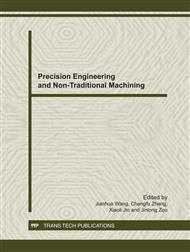p.552
p.559
p.563
p.567
p.572
p.576
p.580
p.584
p.588
Machinery Fault Detection Using Geodesic Distance Based on Genetic Clustering Algorithm
Abstract:
Aim at the problem that there is an irregular data distribution when using multi-sensor to monitor machine conditions, a genetic clustering algorithm using geodesic distance metric (GCGD) is adopted to perform machine fault detection. In GCGD, a geodesic distance based proximity measure is employed replacing Euclidean distance that cannot correctly describe the relationship between data lying in a manifold, and GCGD determines partitioning of the feature vectors from a combinatorial optimization viewpoint. Fault detection experiments of inlet valve leakage in a two-stage reciprocating compressor reveal that GCGD achieves a better performance of fault detection than the K-means algorithm and a genetic algorithm based clustering technique.
Info:
Periodical:
Pages:
572-575
Citation:
Online since:
November 2011
Authors:
Price:
Сopyright:
© 2012 Trans Tech Publications Ltd. All Rights Reserved
Share:
Citation:


